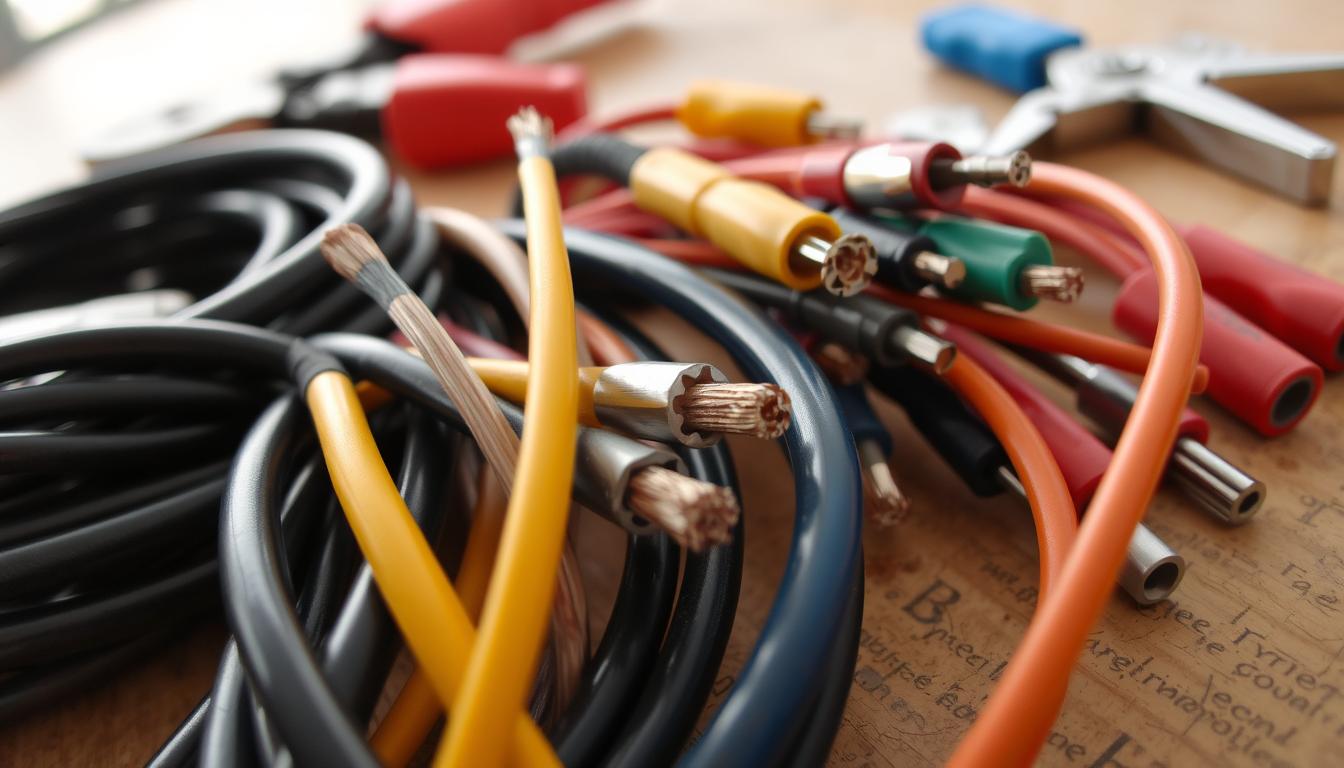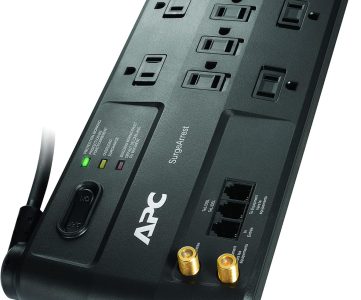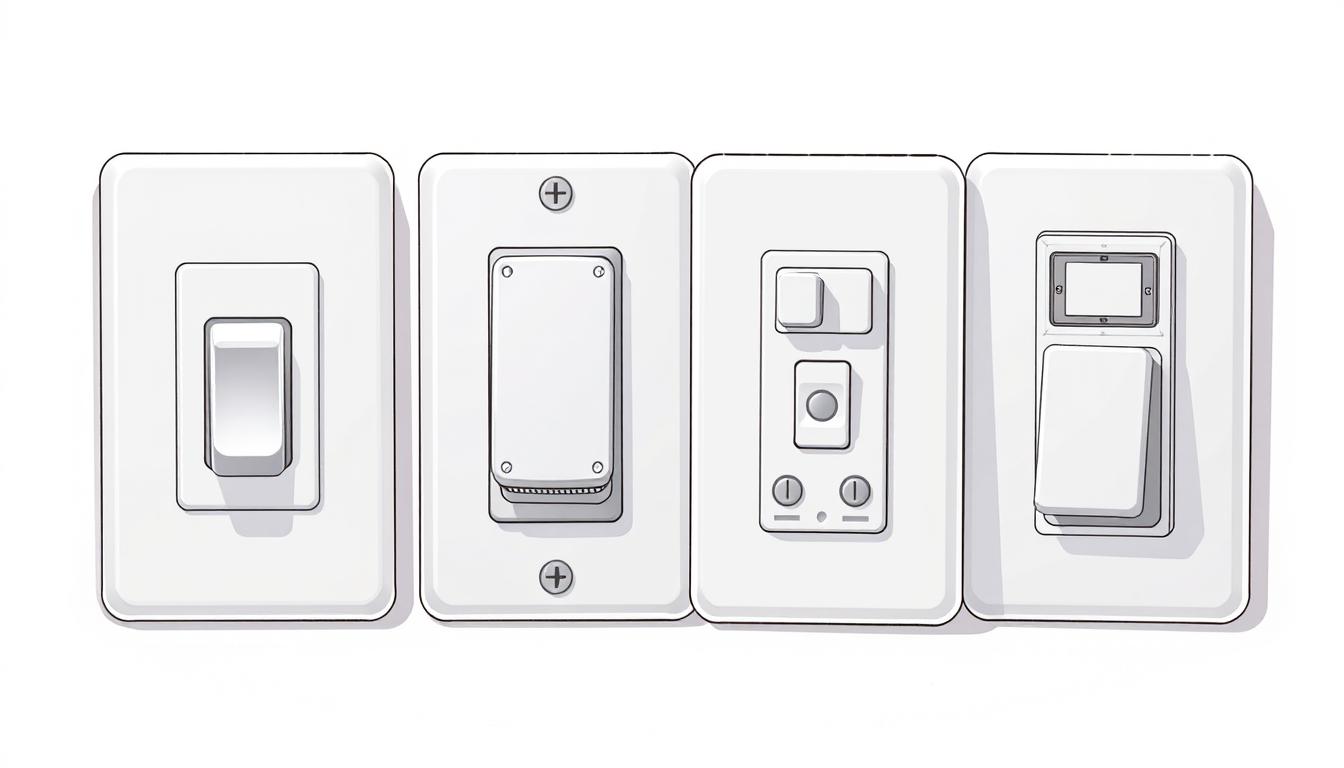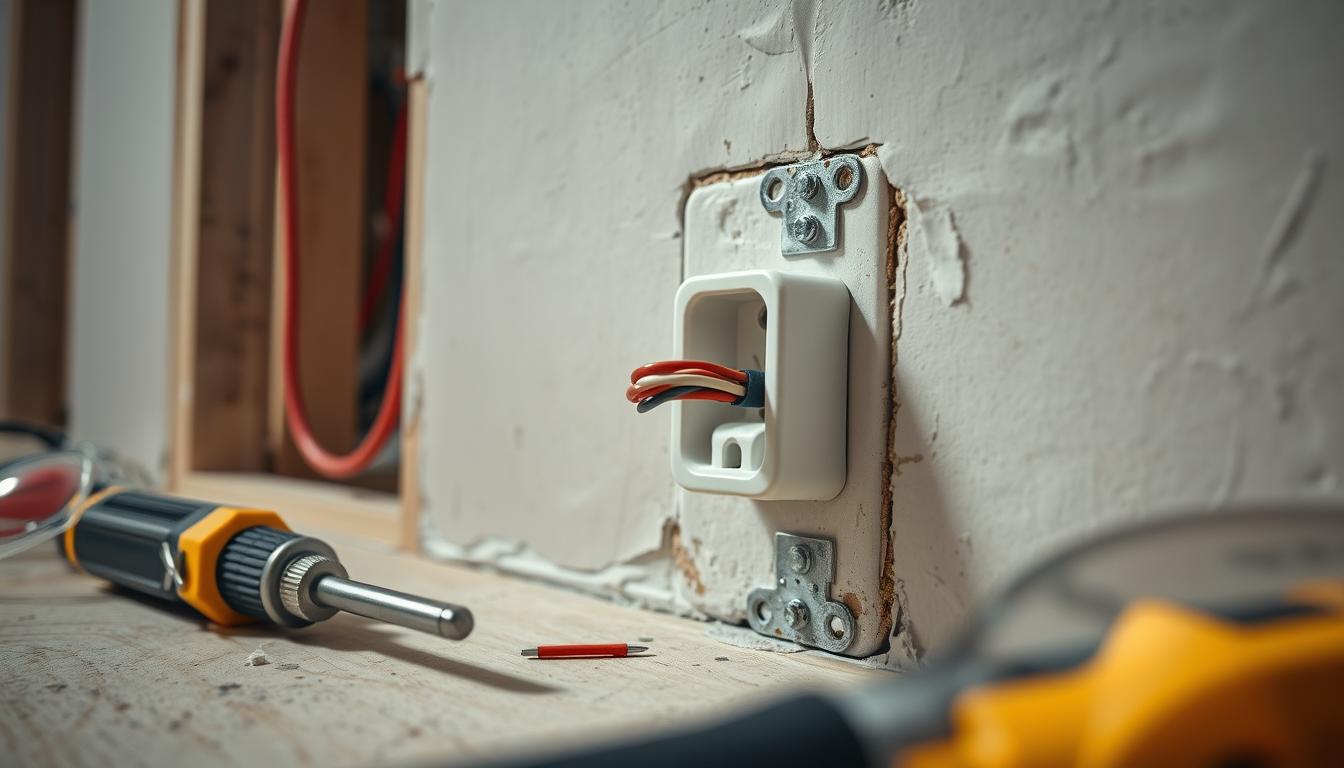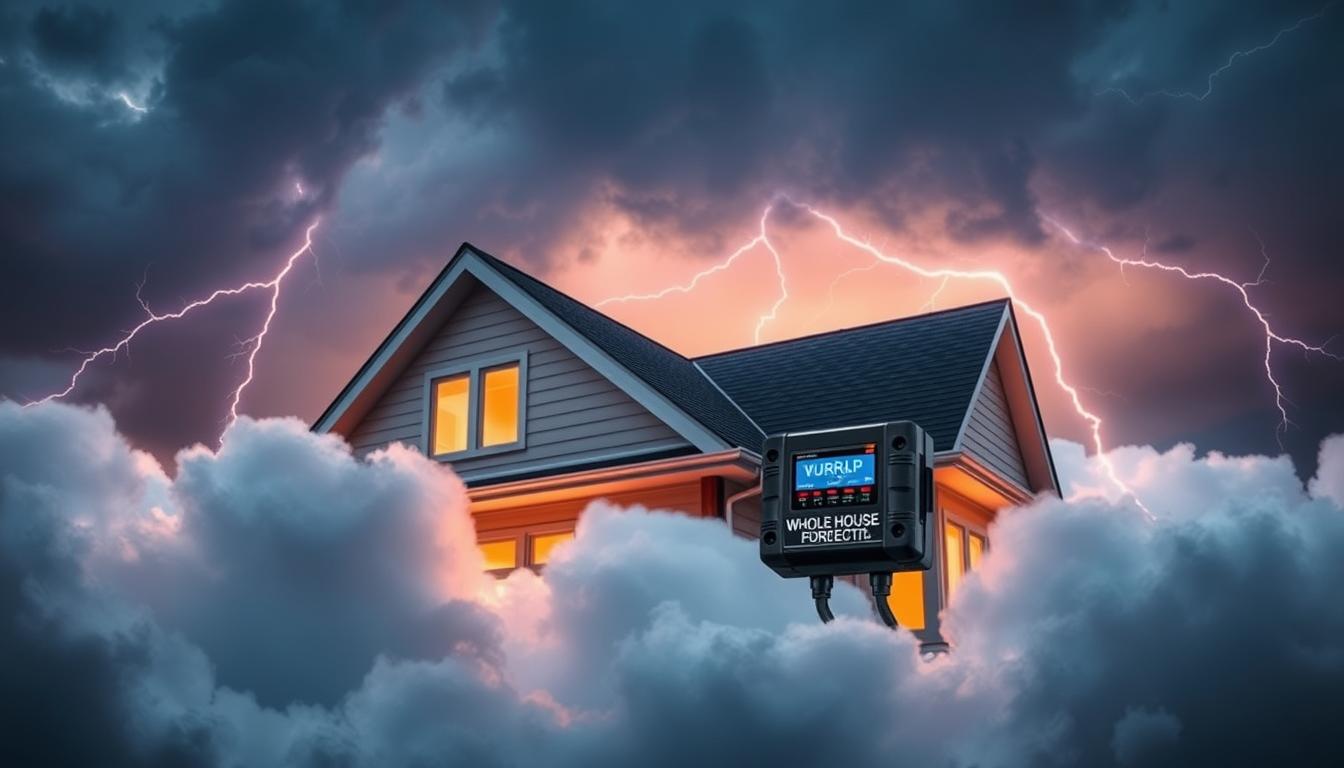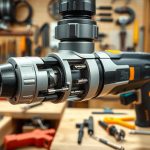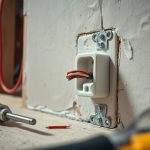Choosing the right wire types is key for safety and efficiency in home electrical wiring. Electrical cables vary, and knowing their materials and uses is crucial. The right wire ensures your home’s electrical system works well.
When rewiring or installing new circuits, picking the right wire is vital. You need to think about the cable type, durability, and how it handles different conditions. The right wire makes your home’s electrical system reliable, efficient, and safe.
Key Takeaways
- Choosing the right wire types is essential for safety and efficiency in home electrical wiring.
- Understanding the different types of electrical cables is crucial for making informed decisions.
- Wire types, including electrical cables, must be selected based on their materials and applications.
- Electrical cables must be durable and able to withstand various environmental conditions.
- Selecting the ideal wire types ensures a reliable, efficient, and safe home electrical system.
- Considering the type of electrical cables required is vital for rewiring or installing new circuits.
- Compliance with electrical standards is necessary when choosing wire types for home electrical wiring.
Understanding Basic Wire Types for Home Electrical Systems
Choosing the right wire type is key for safety and efficiency in home electrical systems. Copper wiring is popular because it conducts well and lasts long. It’s important to know about different wire types and their uses. Wire gauges also matter for the right wire choice.
Home electrical systems use various wire types for different needs. Non-Metallic (NM) cables are great for indoor wiring because they’re flexible and easy to install. Metal-Clad (MC) cables protect against damage and are good for exposed areas. Underground Feeder (UF) cables are for outdoor use, like underground installations, and resist moisture and weather.
Key Wire Types
- Non-Metallic (NM) cables: ideal for indoor wiring, flexible, and easy to install
- Metal-Clad (MC) cables: offer better protection against mechanical damage, suitable for exposed areas
- Underground Feeder (UF) cables: designed for outdoor use, resistant to moisture and environmental factors
Knowing about these wire types and their uses is crucial for safe and efficient wiring. By picking the right wire and considering copper wiring and wire gauges, homeowners can have reliable electrical systems that meet their needs.
Wire Gauge Selection: What Size Do You Need?
Choosing the right wire gauge is key for safety and efficiency in electrical wiring. Wire gauges affect how much electrical current a wire can carry. A smaller gauge means a bigger wire diameter, which can handle more current.
To pick the right wire gauge, think about your project’s needs. Consider the wire’s length and the current it must carry.
Here are some key factors to consider when selecting a wire gauge:
- Current rating: The amount of electrical current the wire can handle
- Distance: The length of the wire run
- Voltage: The voltage of the electrical system
Using the wrong wire gauge can cause overheating, fires, or electrical shocks. It’s vital to know the importance of wire gauges and installation requirements for safe electrical work. The right wire gauge ensures your electrical system is safe and efficient.
Remember, picking the correct wire gauge is a crucial step in any electrical wiring project. By looking at your project’s installation requirements and understanding wire gauges, you can make sure your electrical system is safe and works well.
Essential Wire Ratings and Their Meanings
Understanding wire ratings is key for safety and following electrical standards. Wire ratings tell us about a wire’s temperature and voltage limits.
In the U.S., electrical wiring must meet strict standards to avoid dangers. Wire ratings help electricians and homeowners pick the right wire for their projects.
Temperature Ratings Explained
Temperature ratings show the highest safe temperature for a wire. This is vital for areas with high heat, like attics or near heating vents. The rating is shown by a letter code, like THHN or THWN.
Voltage Ratings and Limitations
Voltage ratings tell us the maximum voltage a wire can handle. This is crucial for ensuring the wire can carry the needed electrical current. The rating is shown by a number, like 120V or 240V.
Ampacity Requirements
Ampacity requirements state the maximum current a wire can safely carry. This prevents overheating and ensures the wire can handle the electrical load. The requirement is shown by a number, like 15A or 20A.
Knowing wire ratings and electrical standards helps ensure safe and compliant wiring. Whether installing new wiring or fixing old, choosing the right wire is essential. Consider temperature, voltage, and ampacity needs.
| Wire Type | Temperature Rating | Voltage Rating | Ampacity Requirement |
|---|---|---|---|
| THHN | 194°F (90°C) | 600V | 15A |
| THWN | 194°F (90°C) | 600V | 20A |
| XHHW | 194°F (90°C) | 600V | 25A |
Color Coding in Electrical Wiring
Working with electrical cables and different wire types needs a grasp of color coding. This system makes it easy to spot various wires and their roles. It’s a safety boost, cutting down the chance of getting wires mixed up during setup or fixes.
Color codes help tell hot wires from neutral and ground wires. For instance, black wires are usually hot, and white wires are neutral. Knowing these colors is key for both DIY fans and pro electricians to do safe and effective work.
It’s crucial to know and stick to these color rules for safe electrical work. Using the right wire types and color codes lowers the risk of shocks or fires. It makes sure your electrical setup is both safe and dependable.
| Wire Color | Wire Type |
|---|---|
| Black | Hot |
| White | Neutral |
| Copper | Ground |
Indoor vs. Outdoor Wire Types: Making the Right Choice
Choosing the right wire type is key for electrical wiring. The environment where the wire will be used matters a lot. Indoor wires are flexible and easy to install, perfect for inside buildings.
Outdoor wires, on the other hand, need to handle harsh weather. They must resist moisture, sunlight, and extreme temperatures. Copper wiring is a top pick for outdoor use because it’s durable and doesn’t corrode easily.
- Weather-resistant options: Wires that can withstand exposure to rain, snow, and sunlight.
- UV protection requirements: Wires that are resistant to ultraviolet light to prevent degradation.
- Conduit considerations: Wires that are designed to be used with conduits to provide additional protection.
Knowing what your project needs is crucial. Look for wires that can handle weather, UV light, and need for conduits. Always talk to a pro to pick the right wire and make sure it’s installed correctly.
| Wire Type | Indoor/Outdoor | Key Features |
|---|---|---|
| Copper Wiring | Outdoor | Durable, resistant to corrosion |
| Non-Metallic (NM) Cable | Indoor | Flexible, easy to install |
Special Purpose Electrical Wires and Their Applications
Not all electrical wires are the same. There are special wires for unique needs. These wire types can handle high temperatures, chemicals, or heavy wear. They’re also used in specific fields like cars, planes, or medical gear.
Knowing about these special wires is key for anyone working on electrical projects. It’s important to follow electrical standards and safety rules. This ensures electrical systems work well and safely.
Some special wires include:
- High-temperature wires for industrial use
- Chemical-resistant wires for dangerous places
- Abrasion-resistant wires for tough spots
Each industry has its own electrical standards and rules. For example, medical device wires must be very safe and reliable. Choosing the right wire types helps ensure electrical systems are safe and meet all rules.
In short, special electrical wires are vital for many areas. They help ensure systems are safe and work well. By knowing about these wire types, we can make better choices and follow electrical standards and safety rules.
| Wire Type | Application | Key Characteristics |
|---|---|---|
| High-Temperature Wire | Industrial Furnaces | Heat resistance, durability |
| Chemical-Resistant Wire | Hazardous Environments | Chemical resistance, safety |
| Abrasion-Resistant Wire | High-Wear Applications | Abrasion resistance, reliability |
Safety Standards and Code Requirements for Wire Installation
Electrical wiring safety is a top priority. Following electrical standards and installation rules is key to avoiding accidents. The National Electrical Code (NEC) offers detailed guidelines for safe wiring and equipment installation.
In the U.S., the NEC sets the standard for electrical safety. It covers wire sizing, insulation, and protection, plus electrical panel and circuit protection rules. Local building codes may also have extra rules, so it’s important to know these before starting any electrical work.
Key Considerations for Safe Installation
- Compliance with NEC guidelines
- Adherence to local building codes
- Professional installation requirements
By sticking to these rules, you can have a safe and working electrical system. Electrical safety is not just about following rules; it’s about life and death.
It’s crucial to hire licensed electricians who know the NEC and local codes. They can make sure your electrical system is installed right and safe. Don’t risk electrical safety; it’s always safer to be cautious.
Common Wire Installation Mistakes to Avoid
Choosing the right wire gauges is key for safe and efficient wire installation. The wrong wire gauge can cause overheating, fires, and other dangers. For example, a wire that’s too small can overheat, while one that’s too large is unnecessary and expensive.
It’s important to avoid common wire installation mistakes to prevent safety risks and costly fixes. Mistakes include not securing copper wiring well, ignoring safety standards, and picking the wrong wire type. To avoid these, make sure to size wires correctly and keep all connections tight.
Here are some common wire installation mistakes to watch out for:
- Using the wrong wire gauge for the application
- Failing to secure wires properly
- Neglecting to follow safety standards and code requirements
- Using the wrong type of wire for the application
Knowing these potential pitfalls and how to avoid them ensures a safe and successful electrical wiring project. Whether you’re a pro or a DIYer, proper wire installation is vital. It prevents safety hazards and keeps your electrical system running well for a long time.
Remember, the right wire gauges and copper wiring are crucial for a safe and efficient electrical system. By avoiding common mistakes and sticking to safety standards, you can protect yourself and your property from harm.
Cost Considerations and Quality vs. Price
When choosing electrical wiring, it’s key to find a balance between cost and quality. The wire types and electrical cables used affect the system’s safety and efficiency. Cheap options might seem good at first but can cause safety issues and cost more later.
It’s important to know how different wire types and electrical cables affect costs. Here are some points to think about:
- Material quality: Better materials cost more but last longer, improving safety and cutting down on maintenance.
- Compliance with electrical standards: Choosing quality wire types and electrical cables means following safety rules, avoiding legal problems, and reducing risks.
- Long-term costs: Even though cheaper options might seem like a good deal at first, they can end up costing more due to repairs, maintenance, and safety issues.
In summary, when weighing quality against price, think about the long-term benefits of choosing high-quality wire types and electrical cables. Knowing the costs and factors involved helps make better choices for your electrical projects. This ensures a safe and efficient system.
| Wire Type | Cost | Quality |
|---|---|---|
| Copper | High | High |
| Aluminum | Low | Low |
| UF-B | Medium | Medium |
Conclusion: Making Informed Decisions for Safe Home Wiring
Choosing the right wire types is key for safe home wiring. It ensures safety, efficiency, and follows electrical standards. Homeowners and professionals can protect lives and prevent accidents by making informed choices.
When working on home electrical projects, it’s important to research wire sizes and ratings. This research helps ensure your work is safe and reliable. Staying updated with industry best practices and local codes is crucial.
Investing in quality materials and seeking professional advice is wise. It keeps your home and family safe. With the right knowledge, you can create a safe and efficient electrical system for your home.
